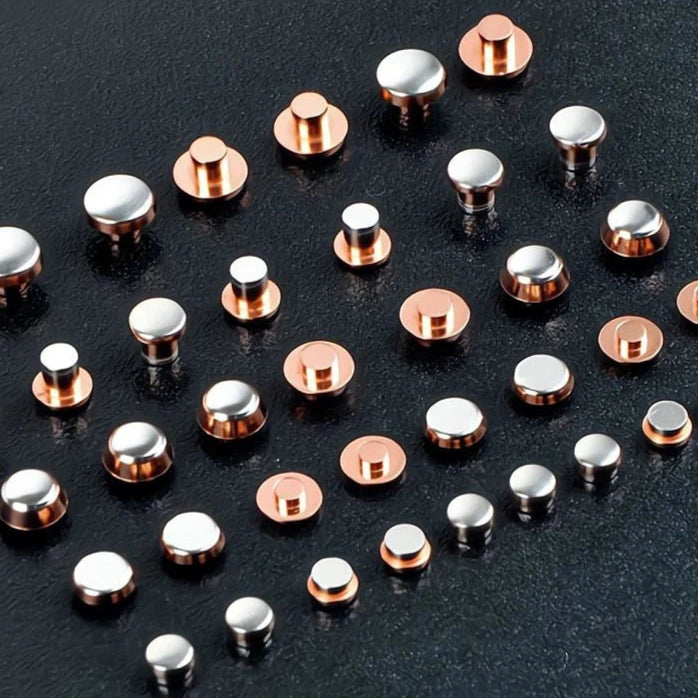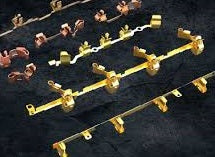Gold Plating
Gold plating is a process where a thin layer of gold is electroplated onto the surface of a metal, enhancing conductivity, corrosion resistance, and aesthetic appeal. Commonly used in electronics, aerospace, and jewelry industries, gold plating provides excellent electrical conductivity and resistance to oxidation, making it ideal for connectors and circuit boards. Its luxurious appearance also adds value to decorative items. Gold plating is durable but may require periodic maintenance depending on the thickness and application.


Nickel Plating
Nickel plating involves depositing a layer of nickel onto a metal surface for enhanced durability, corrosion resistance, and wear protection. This versatile finish can be applied via two methods:
- Electroplating: Creates a uniform, shiny, and decorative coating, often used in automotive, hardware, and household products.
- Electroless Plating: Provides an even, non-magnetic coating without electricity, ideal for complex geometries in industrial applications.
Nickel plating improves surface hardness, reduces friction, and is often used as a base layer for additional coatings like gold or chrome.
Chem Film (Chromate Conversion Coating)
Chem film, or chromate conversion coating, is a protective surface treatment primarily applied to aluminum and its alloys. This process creates a thin, corrosion-resistant layer that improves paint adhesion and maintains conductivity. Commonly used in aerospace, military, and industrial applications, chem film complies with MIL-DTL-5541 standards and is available in clear or yellow finishes. It's ideal for applications requiring lightweight protection without compromising electrical conductivity or adding significant thickness.
Each of these finishing techniques offers unique advantages, allowing you to tailor surface treatments to meet specific performance, aesthetic, or functional requirements.
FAQs
Gold plating is widely used in electronics, aerospace, and jewelry. It enhances conductivity, corrosion resistance, and aesthetic appeal, making it ideal for connectors, circuit boards, and decorative items.
Gold plating is durable but may require periodic maintenance depending on its thickness and application. Thicker layers provide more longevity.
Gold plating offers excellent electrical conductivity and resists oxidation, making it a top choice for connectors, switches, and circuit board components.
Chem film provides lightweight corrosion resistance and improves paint adhesion while maintaining electrical conductivity, making it ideal for aerospace, military, and industrial applications.
Consider the following:
- Performance requirements (e.g., corrosion resistance, conductivity).
- Industry standards (e.g., MIL-DTL-5541 for chem film).
- Aesthetic preferences (e.g., gold’s luxurious appearance).
- Application environment (e.g., industrial wear or decorative use).
Nickel plating is used in:
- Automotive (decorative parts and corrosion resistance).
- Hardware (durable finishes for tools and fasteners).
- Industrial applications (as a base for gold or chrome plating).
Nickel plating improves durability, corrosion resistance, and wear protection. It also enhances surface hardness and reduces friction.
Electroplating: Uses electricity to deposit a shiny, decorative layer of nickel.
Electroless Plating: Deposits nickel evenly without electricity, ideal for complex shapes and industrial applications.